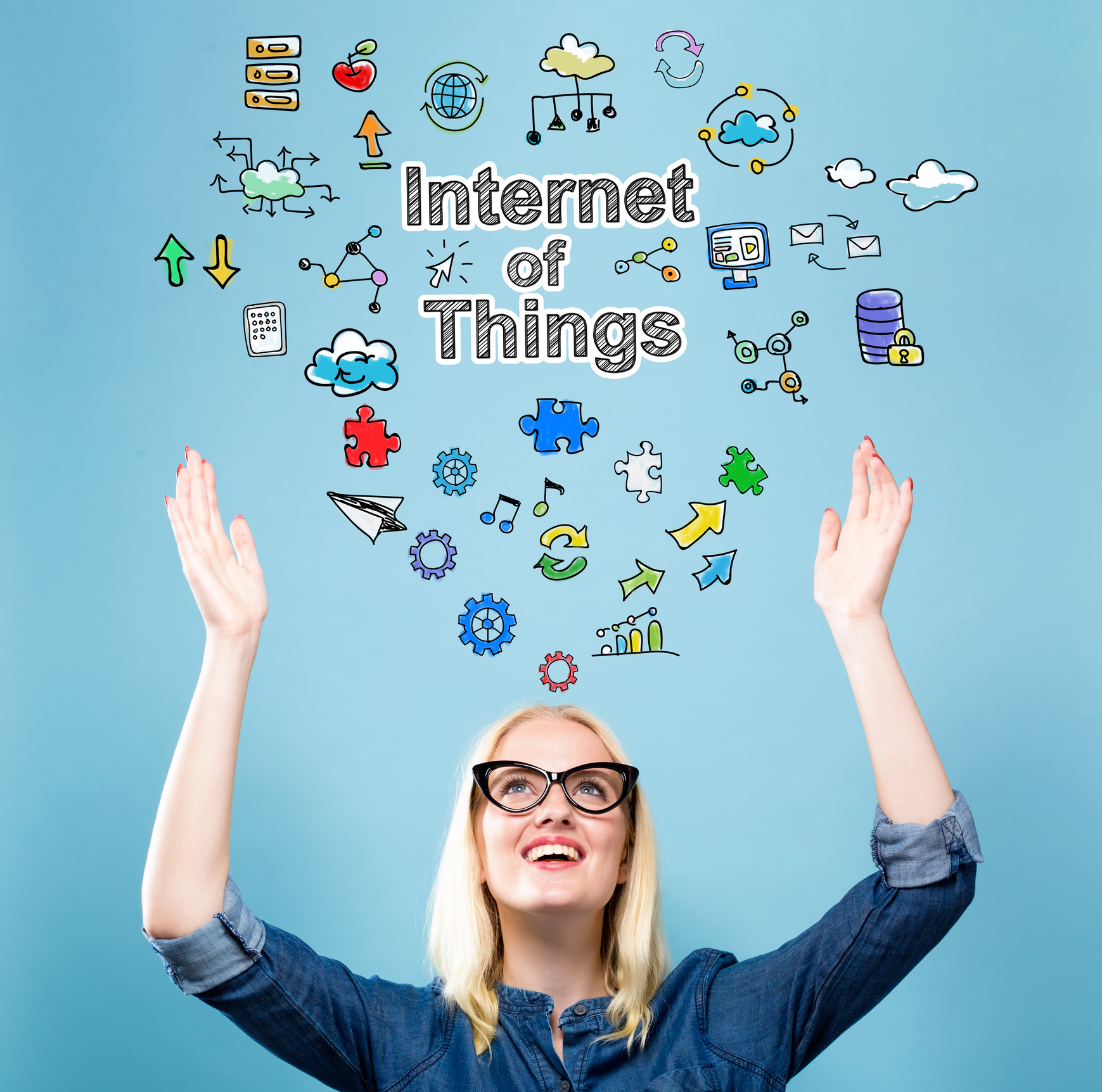When we think about the User Experience (UX), many of us think about this in terms of applications and websites, but in today’s connected world, we also need to think about it in terms of IoT. However, designing for the Internet of Things presents some unique challenges for developers.
We take a closer look at these challenges and provide you with 5 tips for successful IoT UX design based on our years of experience.
Common challenges in IoT UX design
Multiple connected devices and interfaces
IoT system design typically involves multiple interfaces across several devices. A user may turn on their smart home alarm system using the actual device before they go to work. While at work, they may use their phone to check the status or to disable the alarm before their children get home from school.
Similarly, in an industrial setting, employees may need access to IoT sensors on machines or out in the field from their mobile device, as well as from a tablet or desktop. In addition, we often see multiple IoT devices being integrated with one another. Your doorbell may be hooked up to your alarm system, which may be integrated with a smart camera system.
Each IoT device or system has its own user interface, making it difficult to create a seamless user experience for the end user who wants to jump from one device to another.
Increased complexity makes a simple UX more difficult
Given the multi-device configuration of most IoT systems, it can be difficult to create a simple and intuitive setup experience for the user. Yet this is the first time the end user is working in the application, so the setup portion of the user experience is important.
Multi-device systems typically require multiple authentications, forcing users to switch from one device to another to verify their identity and connect the desired devices. A process that is too complex can turn off a user enough to make them decide your product is not for them.
Disconnect between hardware and design
Developers select hardware components based solely on the technical specifications and requirements demanded without giving much thought to the restrictions these choices may place on the interface design and user experience.
The end result is a lackluster (or overly complex) user experience that makes the product difficult to use. With user expectations high, there is no room for this type of disconnect in IoT design if you want your product to succeed, especially in consumer markets.
Choosing the right communications infrastructure
Connectivity issues can have a big impact on the IoT user experience. There are many issues that come into play when evaluating the right communications infrastructure to use. The availability of power, the amount of data to be captured, and how that data (and how much of it) will be sent to the cloud are just some of the issues that must be considered. Using the wrong communications technology can cause disruptions and poor performance that result in a negative experience for the user.
Distrust among users
While many of us are used to IoT and welcome it into our daily lives, there is still distrust. Questions such as “Is Alexa listening?” and “How much of my personal data is this device storing?” run through the minds of many users. These privacy and security concerns create a true obstacle for user experience designers, challenging them to build trust.
5 steps to a successful IoT User Experience
1. Make the UI simple and consistent
You may not be able to make setup as simple for a multi-device IoT system as you can for a single smartphone, but there are things you can do to make it less complicated and time-consuming. For example, using code verification across multiple devices eases the process for users when trying to configure an IoT application across their phone, desktop, tablet, or more.
Beyond setup, the entire user interface should be simple and clean. Buttons should be kept to a minimum and should be intuitive. Users shouldn’t have to use more than one click to accomplish basic tasks.
It’s also important to create a consistent interface across devices. Fonts, colors, buttons, and the general layout should be uniform no matter what device is being used.
2. Foster a collaborative relationship between hardware and UX designers
The best way to ensure hardware selection doesn’t impede the user experience is to have IoT UX designers work side by side with developers from the very beginning of the project. UX designers can work with developers and provide input on the interface and form factor, influencing decisions such as a touchscreen versus buttons and a large screen versus a small one. Collaboration from day one saves time and money and adds a lot of value to the end product.
3. Select the best communications infrastructure
Should you use cellular or Bluetooth? Is Narrowband IoT (NB IoT) or Zigbee the better choice? The communications technology decision is an important one. Closely tied to this is the decision of where to process data. Everything does not need to go to the cloud for analysis. In some IoT applications, it makes more sense to collect and analyze data at the outside “edge” of the network (where the devices are). For example, an autonomous car demands immediate feedback to the user, so local processing at the edge is a smarter choice in many real-time driving scenarios. The cloud can be used for collecting bigger-picture metrics and data to improve the system over time.
4. Make it personal
People have come to expect a high level of personalization from technology, so this has become an important part of a successful user experience. Personalization is particularly important for consumer IoT devices and applications, such as smart thermostats and TVs. Suggestions on shows we may like and reminders on items we may be running low on make IoT devices a welcome part of the day.
5. Create a secure system
We have written a good deal about IoT security. It is an important element to include in the entire IoT design and development process.
While many of these security items happen behind the scenes, they go a long way in creating a user experience that fosters a sense of trust. For example, IoT devices that automatically push regular updates and patches are important for keeping devices (and their users) secure.
Encrypting data at rest and at transit keeps sensitive information safe. Forcing users to create strong passwords, change them regularly, and use multifactor authentication may take a few extra seconds from the user’s day, but they also assure users that the device or application is secure and safe to use.
A unique approach to IoT UX design
When we work with clients on IoT systems and applications, we of course follow the tips we just shared. But we also have a team that has a deep and wide skill set that enables us to provide a unique experience when it comes to creating a powerful IoT UX.
Many of our clients work in an industrial setting. Industrial companies often don’t realize that they can have the kind of modern and sleek user experience we see on consumer IoT devices.
Why do they assume it’s difficult? Well, industrial settings are rife with challenges. The environment is often rugged (outdoors, wet, hot, cold). Connectivity may be poor, requiring devices that are low power. Off-the-shelf solutions often don’t work in these situations.
We have the experience needed to overcome these hurdles. We know which technologies and components can work well in these conditions. We can adjust the code being used, strip out unnecessary elements, and advise on the best chips and sensors to use. Our expertise brings speed, power, and connectivity in a modern user interface.
Some recent examples demonstrate the success we have had. In one instance, we worked with a company that was relying solely on emails to track the trucks it was using to ship produce from one state to another. With our internal product, we were able to send the truck information to the cloud and display it on a map so the user can easily see where all of the trucks are and if they are running on time or behind schedule.
Another company that manufactures nail guns came to us for assistance. Again, we were able to connect to the cloud using Bluetooth technology, so measurements from individual nail guns could be recorded. The data is used to improve product usage and optimize maintenance.
Our ability to accomplish these kinds of projects directly correlates to the depth and breadth of our team and the approach we take with clients. We have team members with experience in all aspects of IoT design and development, from hardware selection to choosing the right communications technology, knowing where to process the data, and, of course, user experience design.
We work very closely with clients, carefully selecting the right hardware and balancing budget constraints with functionality requirements. We develop a mockup to provide a general overview of our vision, and, once approved, we move to a rapid prototyping phase.
We work quickly and closely with our clients, including bringing them into our own Slack channels so we have direct and real-time communication during the design and development process. This partnership approach results in an innovative IoT system that not only works, but is also simple to use and meets user expectations.
Despite the challenges IoT presents when it comes to user experience design, it is possible to create an engaging and powerful UX that helps make your IoT system or application simple and intuitive for your end users. Working with an expert team that has deep experience in IoT application design and development can make the UX design process easier and more successful.

